OneOdio OpenRock Pro and Shokz OpenRun Open Ear Headsets Capsule Review
by Ganesh T S on June 27, 2023 10:00 AM EST
Bone conduction headsets have slowly gained traction in the market over the last decade. Despite the lower audio quality compared to regular air conduction headsets, the open-ear nature of the devices has proved to be a deal clincher for many consumers. While technological improvements over multiple generations have increased the audio quality, in-ear devices relying on normal air conduction are usually preferred on that metric.
Some vendors have realized the market opportunity in a device that can match desirable qualities from both types of headsets. The last few years have seen the appearance of open-ear air conduction / directional audio headsets that retain the situational awareness advantage (no ear occlusion) while also delivering better audio quality compared to bone conduction devices. One of the recent entrants to this segment is OneOdio's OpenRock Pro. This capsule review presents some of my subjective impressions after trying out the OneOdio OpenRock Pro for the last few months. I primarily tried it out as an alternative to the AfterShokz Aeropex (now Shokz OpenRun) bone conduction headset that I had been using for well over a year.
Introduction and Product Impressions
My introduction to bone conduction headsets was on the CES show floor in the early 2010s. AfterShokz had sampled some of their initial releases for review around that time. I was satisfied enough with their products to go out and purchase them for personal use over the last several years - the latest one being the AfterShokz Aeropex (rebranded now as the Shokz OpenRun) in late 2021. The history of bone conduction headsets has already been covered in detail in our review of the Trekz Titanium and Bluez 2.
The primary difference between the Aeropex and the OpenRun model is the QuickCharge feature in the latter that allows a 10-minute charge to provide up to 1.5 hours of battery life. The industrial design and audio specifications are exactly the same.
The introduction of the Apple Airpods Bluetooth earbuds in 2016 kickstarted the craze for small devices plugging directly into the ear canal. The small sizes and dual unit configuration precludes the possibility of direct charging. Instead, these earbuds are often placed in charging cases which are often equipped with batteries themselves. Instead of delving further into the history and technology behind these usual earbuds, it is pertinent here to focus on the open-ear 'earbuds' trend. The oxymoronic tag is confounding, given that earbuds, by their definition of being inserted directly into the ear canal, can't be open-eared. Many vendors have released 'open' earbuds that are less invasive than the original in-ear designs, but they still occlude the ear and can be a source of fatigue and discomfort for some users.
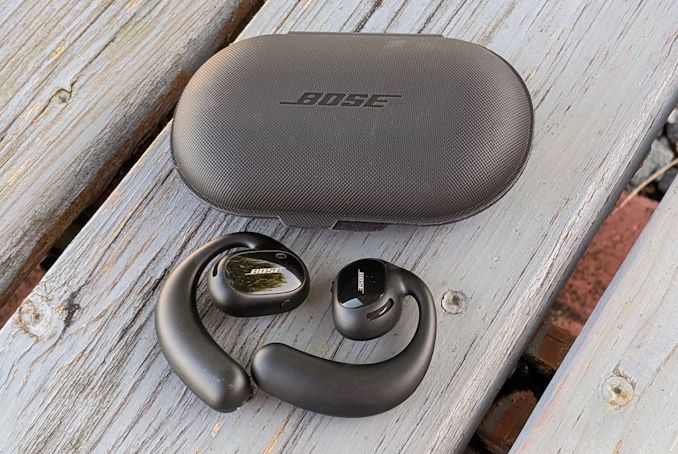
Bose Sport Open Earbuds (Image Courtesy: Tom's Guide)
In a bid to address the ear-occlusion aspect, Bose introduced the Bose Sport Open Earbuds in early 2021. Sony launched the LinkBuds WFL900 last year - while its open-ear design kept the ear canal open for situational awareness, its placement was still within the concha. The fatigue associated with a foreign object in the outer ear is not addressed. On the other hand, the Bose Sport Open Earbuds with its over-the-ear hook design elicits only as much discomfort as wearing glasses would.
Both of these headsets work using 'air conduction' - a fancy term given to the orientation of the driver inside the headset to to focus the sound into the ear canal. These directional audio implementations allow for louder volume and are less prone to audio leakage under active use (i.e, when worn on the ears). is The popularity of the Bose Sport Open Earbuds has resulted in a number of Chinese manufacturers attempting to market similar air conduction headsets at a much lower price point. OneOdio's OpenRock Pro is one such product that seems to have had far more thought and effort put into the design and quality compared to the average knock-off.
Compared to the Bose Sport Open Earbuds with its charging cradle, the OpenRock Pro goes for a more conventional charging case. However, it adopts the same over-the-ear hook design and doesn't occlude the ear.
Air Conduction vs. Bone Conduction
At this point in the review, it is pertinent to compare air conduction and bone conduction from the viewpoint of headsets. Bone conduction has its origins in the medical community as a technology to aid in improving the hearing of people with damage in the outer or middle ear. It uses the bones in the skull to transmit vibrations directly to the inner ear. On the other hand, air conduction / normal hearing requires the sound waves to travel through the ear canal (outer and middle ear) before reaching the inner ear.
Bone conduction can help people with hearing loss due to problems in the outer and middle ear, but the transmission through the skull bones is comparatively of lesser quality compared to air transmission through the ear canal. Due to this aspect, bone conduction headsets have developed a reputation for lower audio quality compared to normal headsets.
All non-bone conduction headsets are based on air conduction from a technical perspective. Headsets touting air conduction as a feature are actually attempting to put focus on their design that prevents ear occlusion. Additionally, these directional audio headsets orient their drivers in such a way as to focus the sound directly into the ear canal while attempting to minimize sound leakage. Like bone conduction headsets, the absence of ear occlusion means that sound from the surroundings can also make it into the ear to provide situational awareness advantage.
OneOdio OpenRock Pro
The OneOdio OpenRock Pro touts itself as true wireless sports open earbuds (setting itself up as a lower cost alternative to the Bose Sport Open Earbuds). The package comes with a user manual and quick guides in addition to the main charging case (with the earbuds placed inside) and Type-A to Type-C charging cable.
The ear loops can be adjusted after wearing (there is a 30° flexibility across two axes) for a snug and secure fit based on the user's ear size. The earbuds weigh in at 13g each, while the charging case alone comes in at 64g. If the user is used to wearing glasses, it is often easy to forget that one is using these earbuds. Charging is done by placing the earbuds inside the charging case, and the case itself has a Type-C female port. The product supports quick charging. Five minutes in the case can deliver up to a hour of usage time. A full charge in the charging case is expected to deliver 46 hours of usage time, while the earbuds are independently set to deliver 19 hours each.
The two earbuds have independent batteries. For some reason, my sample had different rates of discharge with the left earbud consistently running out of charge earlier than the other. In practice, I ended up with around 12 hours of intermittent usage before having to place the earbuds back in their charging case.
The presence of dual noise-cancelling microphones enables usage in relatively noisy environments for communication purposes. The feature is no match for the active noise cancelling in advanced earbuds, but it does perform better subjectively compared to the noise-cancelling ones in the Shokz OpenRun.
OneOdio promotes the OpenRock Pro for users indulging in running and physical exercise, but the earbuds only carry a IP X5 rating - no protection against dust or other solid objects, but resistant to jets of water (but not watertight). This should suffice for a wide variety of fitness activities.
There is a multi-function button on each of the earbuds, and one on the charging case. The latter is used for pairing purposes. The button on the earbuds is used for controlling the volume, playing / pausing media, and taking calls as applicable - all with combinations of single, double, and long presses.
The gallery below shows the internals of the OneOdio OpenRock Pro from the official FCC filings.
The product uses the Qualcomm QCC3040 Bluetooth 5.2 Audio SoC meant for mid- to entry-level wireless earbuds. This brings in the aptX audio codec support also. The internal photographs also reveal that each earbud is equipped with a 0.3515 Wh battery (3.7 V / 95 mAh).
AfterShokz Aeropex / Shokz OpenRun
Shokz (formerly AfterShokz) has been releasing bone conduction audio devices since 2012, and each generation has come with improvements in terms of audio quality, industrial design, and battery life. The Aeropex / OpenRun is the company's eighth-generation product. The package comes with ear plugs, a quick start guide and an extended user manual, a carrying pouch, and two charging cables (USB Type-A to proprietary magnetic induction) in addition to the main unit. A separate box with a sports belt (for carrying phones and keys during fitness activities) was bundled along when I purchased the Aeropex back in 2021, but it is unclear whether the company still includes it with recent purchases of the Shokz OpenRun.
The Aeropex / OpenRun is available in standard and mini sizes, with the latter being 0.83" smaller for a snug fit with smaller head sizes. At 26g, the device weighs the same as the OpenRock Pro earbuds. However, the connecting band between the two transducers ensures that the product has a much lighter feel over the ears. Both sides of the device are balanced, even though the battery is one side and the circuitry / Bluetooth audio SoC / antenna are on the other. Charging is via a proprietary magnetic induction interface, and two charging cables are included in the package. The Aeropex doesn't have a quick charge capability, but the Shokz OpenRun can provide 90 minutes of usage after a 10 minute charge up. Normal battery life is 8 hours, and I was able to mostly exceed that due to usage at low volume.
The Aeropex / OpenRun also includes dual noise-cancelling microphones. Shokz promotes the product as a fit for sports activities - hence, the microphone functionality for use with phone calls is not a focus feature of the product. Subjectively, phone calls sounded better at the other end when using the OneOdio OpenRock Pro compared to the Aeropex.
In order to be a good fit for an active lifestyle, the Aeropex comes with an IP67 rating. The use of bone conduction transducers avoids the need for speaker perforations, allowing the product to be dust tight and water tight (immersion in water for 30 minutes at a depth of 15 cm - 1 m). That does preclude the use of the product while swimming.
There is one multi-function button on the left transducer, while the underside of the right segment behind the year contains the volume control buttons and the magnetic induction charging port. The volume increase button shares duties with the power control and pairing functions. These buttons can also be pressed together for muting calls and changing EQ settings. The multi-function button is used for media playback control and call handling.
The gallery below shows the internals of the AfterShokz Aeropex / Shokz OpenRun from the official FCC filings.
The Aeropex uses the Qualcomm QCC 3024 Bluetooth 5.0 Audio SoC. Though aptX is supported by the SoC, Shokz has decided not include that feature in the Aeropex / OpenRun. The internal photographs also reveal the presence of a 0.55 Wh battery in the Aeropex. On the other hand, the OpenRun seems to have a 0.616 Wh battery (it also supports quick charge capabilities).
Subjective Assessment and Concluding Remarks
The preference for open-ear bone conduction and air conduction (directional audio) headsets is motivated by a number of personal factors that might not apply to everyone.
- Aversion to ear occlusion for extended durations that may result in discomfort or pain
- Reduced risk for ear infections and elimination of ear wax cleaning (a must for in-ear devices)
- Reduced risk for damage to the eardrum (as sound waves do not hit them with full force)
- Increased safety due to situational awareness (external sounds can still be heard)
Back in 2016, when I had reviewed the Bluez 2 and Trekz Titanium from AfterShokz, the main use-case was to hear music during fitness activities. Since then, the use of online collaboration tools for office work has skyrocketed. Taking meetings on-the-go has also become an important use-case, and microphone quality plays a crucial role in that.
Having been optimized for fitness activities, the microphone quality on the Aeropex is passable. Shokz has other models with optimized microphones for office use. The OpenRock Pro's microphone quality is subjectively better from the receiver's viewpoint - but that may have got something to do with better audio processing and noise-cancelling on a newer Qualcomm Bluetooth Audio SoC (QCC3040 against the QCC3024). Both devices use dual noise-cancelling microphones.
I first put the OneOdio OpenRock Pro through the paces as an alternative to the Aeropex for my outdoor running and biking trips. I found that it lasted longer between charges - not surprising given the specifications. I found that the OpenRock Pro needed volume adjustment even for slight changes in ambient noise. On the other hand, the Aeropex rarely needed this adjustment under similar conditions.
The OpenRock Pro wins out on the charging aspect - it uses a standard Type-C charging port, while the Aeropex uses a proprietary magnetic charging cable. To Shokz's credit, they do supply two cables in the package, but the use of a proprietary interface is a minus point (when IP68 phones can use Type-C ports, it is not clear the headphones can't). That said, tagging on the charging connector to the headphone is a much quicker process than trying to mate a USB-C connector. Only wireless charging could be simpler, but that is terribly inefficient and drives up cost. We do not fault Shokz or OneOdio for not including wireless charging capabilities.
Subjectively speaking, the quality of audio in the OpenRock Pro is better than the Aeropex. However, that is to be expected, given that air conduction / directional audio uses normal diaphragm speakers compared to vibrating transducers in bone conduction headphones.
Though the OpenRock Pro features adjustable ear loops, I wasn't able to get as good a fit as desired. The band-based Aeropex felt much more secure during fitness activities. That said, the over-the-ear loop design of the OpenRock Pro is much better than standard earbuds which tend to fall out when the user makes fast or sudden movements.
The Aeropex (rated IP 67) is meant to be much more amenable to intense workouts even in inclement weather compared to the OpenRock Pro (rated IP X5). I didn't get a chance to put the two to test under conditions that would have stressed these protection ratings. One aspect to note here for the magnetic charging connectors in the Aeropex is moisture detection. To prevent charging under improper conditions, the product does include moisture detection support on the charge points and lets out an audible beep for the user to wipe the connector dry.
On the technology front, the Aeropex based on bone conduction can be used by people with hearing loss due to problems in their outer or middle parts of the ear. The OpenRock Pro is no different from run-of-the-mill headsets in that respect. Sound leakage used to be a major issue for AfterShokz headsets in the first few generations, but that problem has been fixed in recent releases. That said, the leakage in the Aeropex is slightly more than what was seen in the OpenRock Pro at lower volumes, as the audio output of the latter is highly directional. However, leakage is quite noticeable at higher volumes even in the OpenRock Pro.
Earbuds, as a product category, may have garnered a very large market share over the last few years. However, it is the implementation of technologies such as bone conduction and air conduction (directional audio) in products like the AfterShokz Aeropex and OneOdio OpenRock Pro that have take care of the accessibility aspect.
The AfterShokz Aeropex / Shokz OpenRun and OneOdio OpenRock Pro are both attractive options for people looking to purchase open-ear devices. The Shokz OpenRun is available on Amazon usually for $130, though promotions do bring down the price to $100 occasionally. The OneOdio OpenRock Pro is on Amazon for $170 (around $110 after promotions), but is also available direct from the manufacturer for $130. There is not much to separate the two products in terms of pricing. Each of them has its own advantages for specific scenarios. For fitness activities and for users with specific types of hearing impairment, the bone conduction-based Aeropex is preferable. For use in other scenarios, the audio and microphone quality of the OneOdio OpenRock Pro gives it the edge.


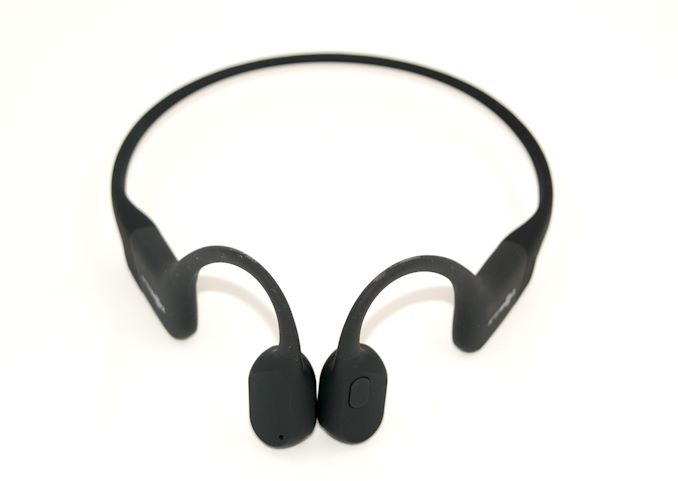
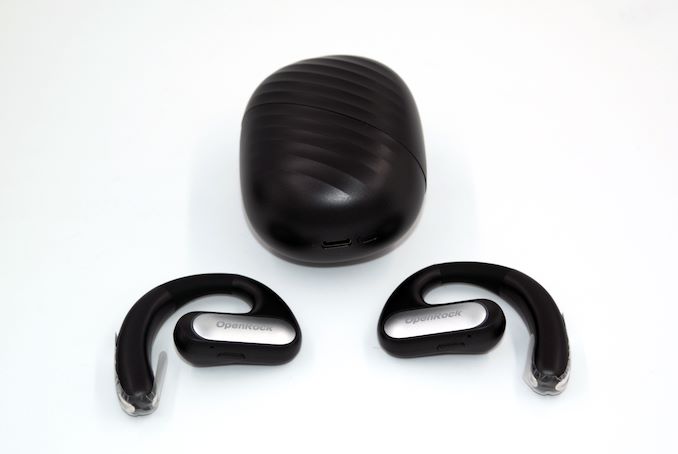
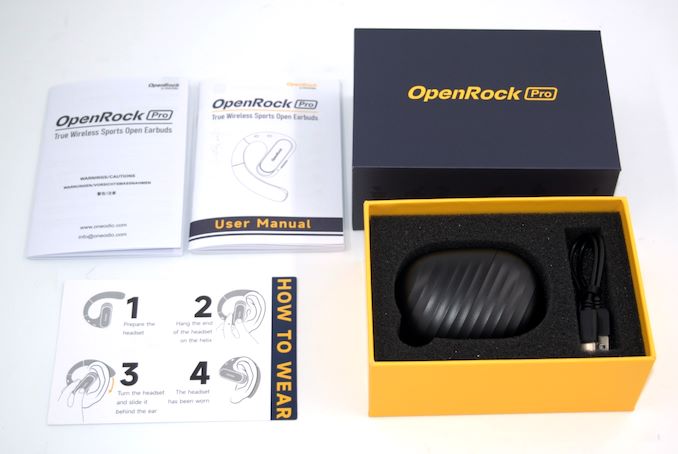













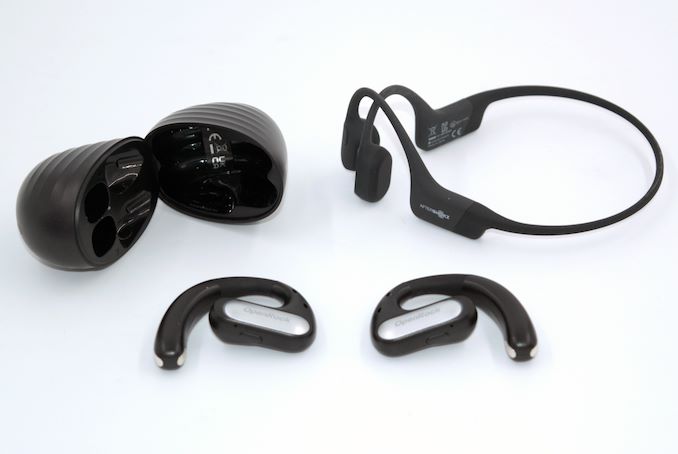








0 Comments
View All Comments